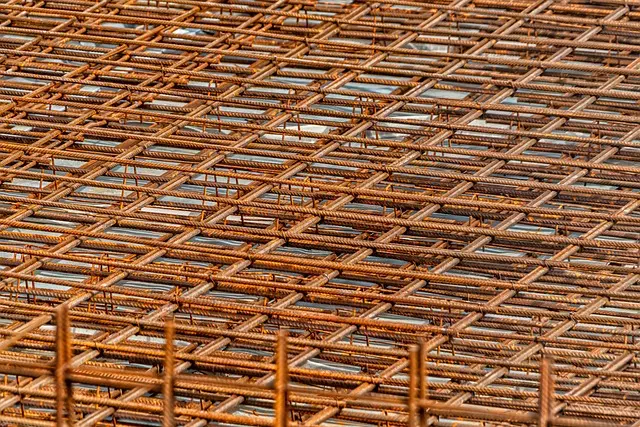Foundation cracks range from cosmetic issues to severe structural damage, requiring professional Residential Foundation Repair. Common causes include settlement, heave, and differential staining, leading to various crack types. Accurate identification of crack patterns and underlying causes is crucial for selecting appropriate solutions, from DIY repairs to expert services. Traditional methods are expensive and time-consuming, but innovative solutions like polymeric injectables and DIY kits offer affordable alternatives. Homeowners should trust professionals for complex repairs, as improper DIY attempts can cause further damage. Regular maintenance, including inspections and proper drainage, prevents future issues and preserves structural integrity.
“Discover affordable solutions for repairing foundation cracks, a common yet concerning issue for many homeowners. This comprehensive guide delves into the world of residential foundation repair, exploring the various types and causes of cracks, their impact on structures, and available repair methods.
From traditional techniques to innovative, cost-effective solutions, we offer insights on DIY repairs versus professional services. Learn about long-term maintenance strategies to ensure your repaired foundation’s longevity. Optimize your home’s stability and curb appeal with our expert advice tailored for residential foundation repair.”
Understanding Foundation Cracks: Common Causes and Types

Foundation cracks can range from harmless aesthetic issues to serious structural problems, requiring professional residential foundation repair. Understanding their causes and types is the first step in addressing them effectively. Common causes include settlement, heave (caused by ground movement), and differential staining (uneven drying of concrete). Settlement cracks typically occur as a structure adjusts to its new surroundings after construction, while heave can happen due to changes in moisture content in the soil beneath the foundation.
There are several types of foundation cracks: hairline cracks (thin, shallow cracks); vertical cracks (running straight down); horizontal cracks (level with the ground); diagonal cracks (sloping in one direction); and step cracks (cracks that resemble steps). Each type may indicate different issues, from minor settlement to more severe structural problems. Identifying the specific type and cause is crucial for determining the best course of action, whether it’s DIY repair or professional residential foundation repair services.
The Impact of Cracks on Residential Structures

Foundation cracks, though initially seemingly minor, can have significant implications for residential structures over time. These cracks are more than just cosmetic issues; they represent potential structural weaknesses that may compromise the integrity of a home. As water seeps through these gaps, it can accelerate the deterioration process, leading to further damage like mold growth and weakened support systems. This is especially problematic in regions with varying weather conditions, where freezing and thawing cycles can exacerbate crack formation.
Regular residential foundation repair is essential to mitigate these issues. Addressing cracks promptly not only enhances the aesthetics of a home but also safeguards against costly structural failures. Early intervention can prevent what might seem like minor defects from becoming major problems, ensuring the longevity and stability of the residence.
Traditional Repair Methods: Cost and Effectiveness

Traditional methods for repairing foundation cracks in homes, often involving complex processes and specialized equipment, can be both costly and time-consuming. These conventional repair techniques typically include excavation, removing the damaged portion of the foundation, and replacing it with new concrete or steel reinforcement. While effective, this approach is expensive due to labor costs, material expenses, and potential environmental impact.
For homeowners on a budget, these traditional methods might not be feasible. Residential Foundation Repair doesn’t have to break the bank, however. Innovative solutions offer more affordable alternatives. These modern techniques focus on cost-effectiveness without sacrificing structural integrity, making them ideal for those seeking a more pocket-friendly option for their residential foundation repair needs.
Innovative and Affordable Crack Repair Solutions

In today’s digital era, innovative solutions are transforming the landscape of residential foundation repair, offering affordable alternatives to traditional methods. Advanced technologies and techniques have made it possible to fix cracks in foundations effectively without breaking the bank. One such game-changer is the use of polymeric injectables, which can fill and seal cracks, preventing further damage and providing a durable solution. These injectables are easy to apply and cost-effective compared to complex structural repairs.
For homeowners seeking budget-friendly options, DIY crack repair kits are now widely available. These kits include easy-to-follow instructions and all the necessary tools for fixing minor cracks. By embracing these innovative and affordable solutions, property owners can effectively maintain their homes’ structural integrity while keeping costs low. This approach is particularly beneficial for those looking to avoid extensive and costly residential foundation repairs.
DIY vs. Professional: Making the Right Choice

When it comes to repairing foundation cracks, homeowners often grapple with the choice between DIY methods and professional services. While doing it yourself can be appealing due to cost-effectiveness and control over the process, complex or extensive residential foundation repair is best left to experts. Foundation crack repair involves specialized techniques, knowledge of structural integrity, and adherence to safety standards, ensuring long-lasting results.
Professionals in residential foundation repair have the expertise and tools needed to accurately diagnose the cause of cracks and implement effective solutions. They offer peace of mind, guarantees on their work, and often provide a range of services, including crack sealing, carbon fiber wrapping, and underpinning, addressing the root issues for sustainable repairs. This decision is crucial, as improper DIY attempts might lead to further damage or even compromise your home’s structural safety.
Maintaining Your Repaired Foundation: Long-Term Strategies

After repairing a foundation crack, proper maintenance is key to ensuring longevity and preventing future damage. A crucial step is regularly inspecting your home for any new cracks, especially in areas prone to movement like basements or crawl spaces. Addressing small issues early can prevent them from becoming costly structural problems.
For long-term protection, consider implementing preventive measures like proper drainage around the foundation to reduce water pressure and ensure your home’s stability. Regular cleaning of debris and leaves away from the base also helps maintain optimal conditions. Remember, regular maintenance for residential foundation repair is an investment in your home’s structural integrity and can save you from costly repairs down the line.
